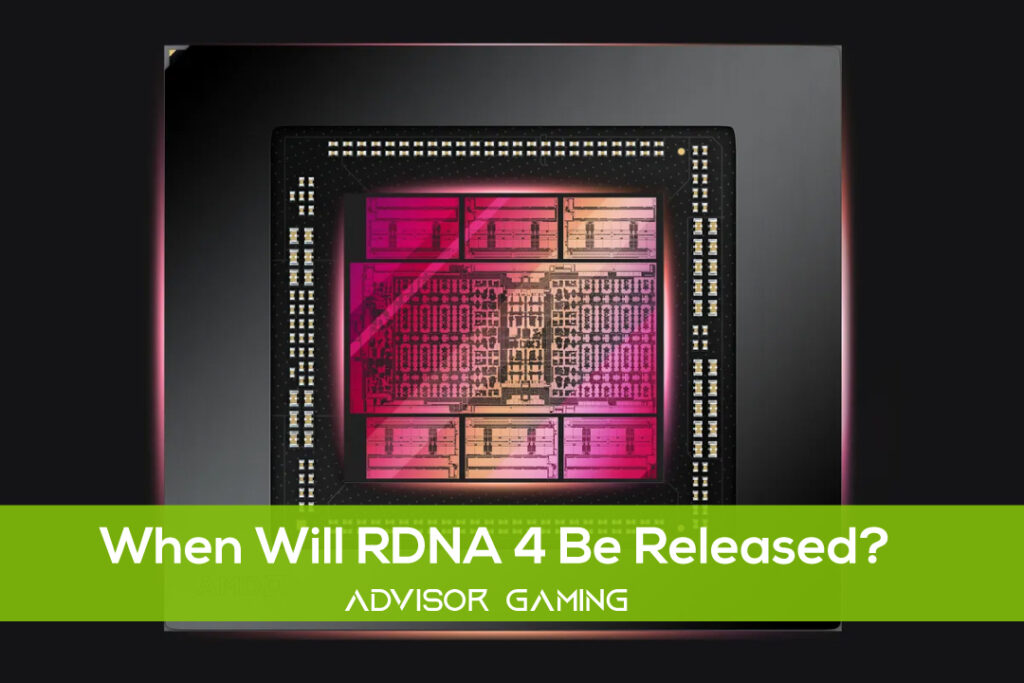When Will RDNA 4 Be Released?
After the success of RDNA 3 architecture, AMD’s fans are eager to see what RDNA 4 has in store. The upcoming GPU is expected to improve performance and power efficiency. It is also rumored to have better hardware ray tracing capabilities.
Based on AMD’s previous cadence, the RDNA 4 GPUs are expected to be released in 2024.

Radeon 8000 Series
While official information from AMD regarding the rdna 4 release date has been scant, industry speculations and rumors have kept enthusiasts on the edge of their seats.
There’s a lot of hype surrounding AMD’s next generation of GPUs. These GPUs will be built on the new RDNA 4 architecture, which is expected to offer significant performance improvements over the current generation. These new graphics cards will also feature the latest in gaming technologies, such as hardware-accelerated ray tracing. However, there’s no set release date yet. Rumors suggest that these new graphics cards will be released in 2024, two years after the launch of the RDNA 3 series.
Rumors have suggested that the RDNA 4 architecture will not have any high-end GPUs, similar to the Polaris architecture and the previous generation of AMD GPUs. This is a bit surprising because the high-end is where the most revenue comes from for a graphics card manufacturer. But a fresh leak today from YouTube channel Moore’s Law is Dead showcases a diagram of what was allegedly a prototype for a top-end GPU called Navi 4C.
High-End
According to AMD, high-end Radeon cards based on RDNA 4 will be able to deliver 50% higher performance than the current generation. While that may sound enticing, it’s not clear how exactly that performance will be achieved. The company could make the chips smaller, or it could use a new and improved graphics pipeline. Either way, the new GPUs will be more efficient than their predecessors, and that’s something gamers can look forward to.
The high-end Radeon 8000 Series is expected to have faster clock speeds and better ray tracing capabilities than the previous generation. The GPUs will also feature a new memory interface with starting speeds of 36 Gbps. This will provide a lot of bandwidth for games, especially if the GDDR7 has 256-bit widths.
AMD’s upcoming RDNA 4 graphics chips will not be available for gaming desktops, but it will offer a new line of laptops that will offer up to 75 percent of the performance of a high-end Nvidia GPU for half the price. This is a good strategy for AMD, which has been unable to compete with Nvidia in the enthusiast tier for years.
Mid-Range
When it comes to the mid-range Radeon 8000 Series, Rick Bergman, AMD’s EVP of Computing & Graphics Business Group, has promised that this generation will provide even greater performance. So, it’s likely that the new chips will be able to rival high-end offerings from Nvidia, while also providing excellent value for gamers who are looking for an affordable way to play the latest games.
However, if the rumors from multiple sources including Kepler_L2 and Uzzi28 are to be believed then it’s looking unlikely that there will be any high-end RDNA 4 GPUs. The reason behind this is that Navi 4C – one of the three MCM configurations for the new GPUs based on the RDNA 4 architecture – will not be featuring any high-end GPUs as part of the new Radeon 8000 series. Instead, the company will focus on mid-range GPUs which is something that’s not entirely surprising as Nvidia has done the same thing with its RTX 2080 and RTX 3090 GPUs.
Price
AMD’s RDNA 3 GPUs have generated significant interest among gamers, thanks to their improved performance and power efficiency. But there is no doubt that the company has to improve its cards further to compete with Nvidia’s RTX 20 series. Its next generation, dubbed RDNA 4, is anticipated to be released in 2024. It will be based on the Navi 4x architecture. The rdna 4 release date continues to be shrouded in mystery, and likewise, concrete pricing details remain elusive.
However, it is rumored that AMD’s upcoming RDNA 4 GPU lineup will not include high-end cards. This is quite a surprising decision, especially considering that the company skipped the high-end market with its Polaris and RDNA 1 generations. This rumor, which was first reported by Bits And Chips and is based on an anonymous source, should be taken with a grain of salt. But it seems that the company wants to focus on affordable graphics cards rather than competing with Nvidia’s expensive offerings. If this is true, it will be a good move for AMD’s bottom line.
Conclusion
The anticipation surrounding the RDNA 4 release date encapsulates the eagerness of the tech community for the next evolution in graphics processing. While speculation and rumors provide a glimpse into what might come, only an official announcement from AMD will quench the thirst for concrete details.
As enthusiasts continue to wait in anticipation, one thing remains certain: the RDNA 4 architecture has the potential to redefine the benchmarks of graphical performance, setting new standards for the industry and elevating the gaming and computing experiences of consumers worldwide.

